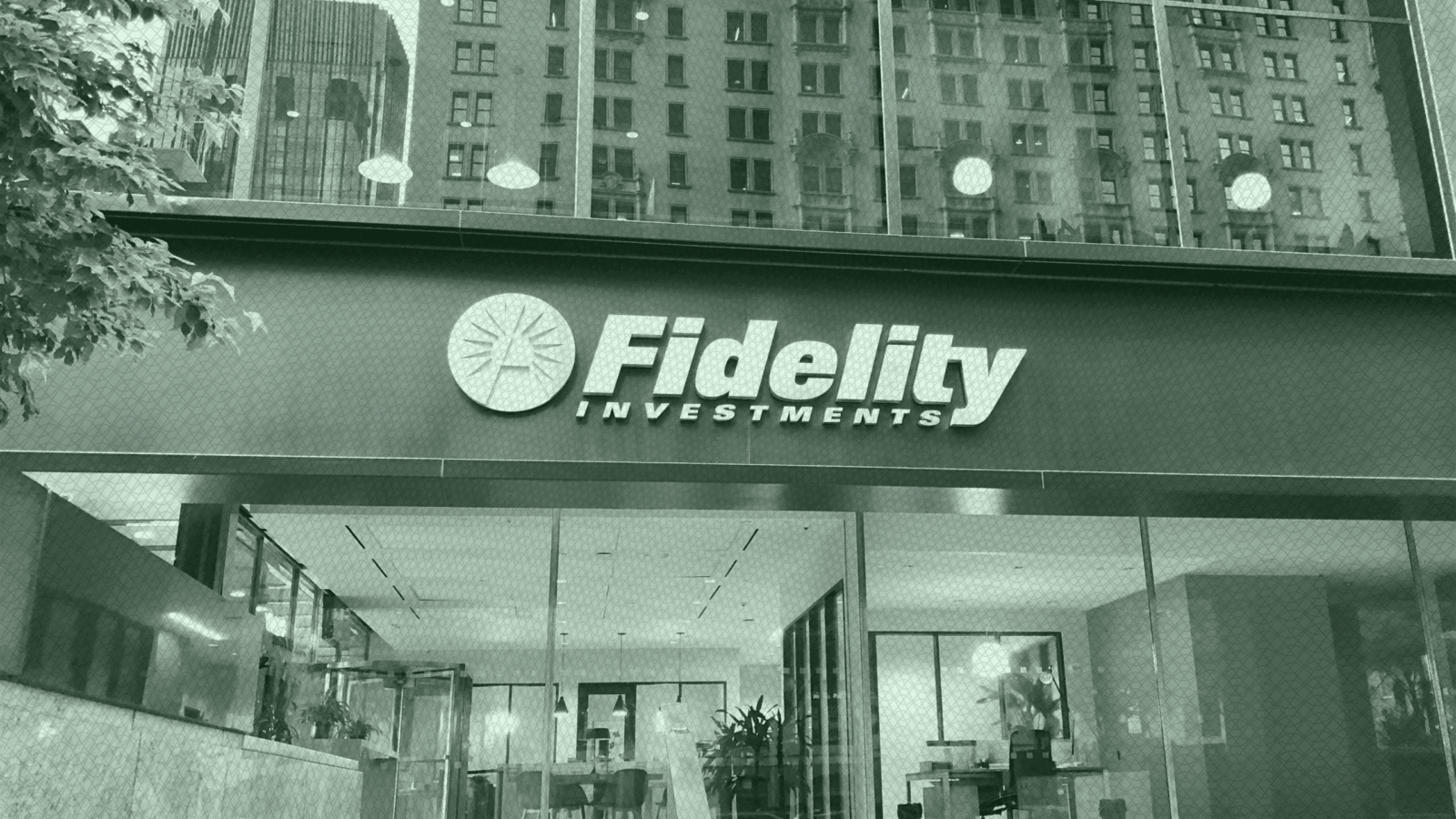Good morning.
Slam dunk.
Beyond being one of the most legendary players to ever touch a basketball, Shaquille O’Neal is quite the entrepreneur. He owns dozens of fast food locations, is a notable tech investor, and of course, stars in commercials for The General car insurance. And now, he’s stepping into the world of asset management. Last week, the four-time NBA champion became a founding partner of Jacmel Infrastructure, an alternative investment platform that targets critical infrastructure across the US, primarily in the transportation, energy, social and digital sectors.
We wish the 15-time All-Star the best of luck on this new venture, but we have one question: When are we going to get that “Kazaam” sequel?
Also, if you haven’t seen them already, check out some of the great interviews Advisor Upside filmed at the Future Proof Festival. We sat down with industry leaders from firms including Morgan Stanley, Grayscale, Russell and more to discuss major developments shaping the financial world today.
*Presented by Capital Group. Stock data as of market close on October 13, 2025.
Behind Pontera’s Open Letter Calling Out Fidelity Over 401(k) Accounts

Just like an all-you-can-eat buffet, there’s no sharing when it comes to retirement accounts.
Fidelity doesn’t want its 401(k) customers sharing account credentials with third-party platforms that want to help manage those assets, and said the practice is potentially putting their accounts at risk. Fidelity announced last year that it would take steps to prevent platforms reliant on credential sharing from accessing and taking action in customer accounts held at the asset manager. Those efforts have ramped up in recent weeks with Fidelity saying sharing credentials is against company policy, according to an email viewed by Advisor Upside.
But Pontera — a fintech that lets advisors manage clients’ workplace retirement plans — had sharp words for the largest 401(k) provider last week, alleging that security is not really Fidelity’s main concern. “This is absolutely not about security despite the narrative that Fidelity continues to tell,” Pontera CEO Yoav Zurel told Advisor Upside.
Lock It Up. No, You Lock It Up
In an open letter to Fidelity last week, Zurel accused the firm of blocking customers who shared account access with outside advisors or platforms. “What we’re seeing is an anticompetitive power grab — Fidelity compelling customers to use Fidelity advisors for their own 401(k) accounts, or no advisors at all,” he wrote. Zurel argued Fidelity is trying to keep savers “locked under maximal institutional control” to steer business toward its own services.
Defined contribution plans, which hold roughly $13 trillion, have become a battleground between major incumbent recordkeepers advocating for client protection and fintech firms that are pushing for more choice and fiduciary flexibility. Many of the 401(k) participants whose accounts were blocked said they “did not share their credentials and do not appear to be aware that a third-party platform is using and storing their credentials,” according to a Fidelity spokesperson. The firm also said:
- Some clients, who have their advisors manage their Fidelity 401(k)s through platforms like Pontera, received notices that they were blocked from accessing their digital accounts.
- Fidelity said clients must call in to “reset their digital credentials to maintain uninterrupted digital access to their account,” according to the email.
The re-verification process has been tough on customers. “Some consumers have been asked to send a copy of their driver’s license, passport and more over email — and many have refused to do so,” Zurel said. “In some instances, consumers have been told that their financial advisors and spouses cannot join them on the re-verification calls.”
All in One Place. Advisors haven’t been thrilled about the measures either, saying it runs counter to fiduciary responsibility and keeps them from getting a full view of a client’s finances. “If you have an advisor who’s already managing your IRA or taxable brokerage account, wouldn’t you want that same advisor to be able to manage your workplace retirement plan?” said Kyle Playford, a CFP with Freedom Financial Partners.
Small Caps, Plenty of Catalysts with an Attractive Entry Point?
That’s the perspective of Allspring’s John Campbell, senior portfolio manager on the firm’s SMID Core ETF (ASCE).
A former nuclear engineer, John sees a few things happening in small-to-mid cap territory that are making this market segment feel attractive:
- Favorable Interest Rate Dynamics: With the Fed poised to lower interest rates in coming sessions, there could be a disproportionately positive impact on small caps with floating-rate debt, helping push more profit to the bottom line.
- M&A: Innovation happens in a diffuse arena, and larger companies are acquiring smaller but emerging competitors to accelerate their pipeline and go-to market strategies.
- Relative Valuation: Small and mid cap companies have been out of favor for some time, a reversion to the mean could be overdue.
All told, John Campbell and Allspring leverage a dual, quantitative and fundamental approach to identify ~50 carefully selected names they believe are poised to outperform.
Explore Allspring’s approach to small and mid cap stocks here.
Creative Planning’s Massive SageView Deal May Be ‘Creating A Monster’
And then there was one.
Creative Planning’s blockbuster acquisition of the $250 billion retirement-focused RIA SageView Advisory Group will create a massive firm with $640 billion in total client assets and 550 advisors, according to a statement. It is also one of the largest deals to date in an industry experiencing unprecedented levels of M&A. Experts said it’s a harbinger of future multi-trillion dollar deals to come, particularly in the retirement planning segment.
“We were two of the top retirement plan consulting providers in the United States, and now, we’re a formidable force together,” Creative Planning President and CEO Peter Mallouk told The Daily Upside. “The retirement plan space is consolidating extremely rapidly … You’re going to have just a few players working with most of the retirement plans.”
Land of the Giants
The Creative Planning purchase comes at the height of wealth management M&A, as deal sizes grow both in terms of AUM and advisor headcount. The number of transactions in the first half of this year was 132, which is 25% more than from the same period last year, according to Fidelity. RIA consolidators, which acquire and integrate RIAs, have also grown considerably over the last decade and now account for $1.5 trillion in assets. Still, the latest deal is an outlier. “Creative Planning is creating a monster,” said Fred Barstein, CEO of The Retirement Advisor University. “It’s just huge.”
Other recent mega-deals include:
- LPL Financial’s acquisition of $100 billion Atria Wealth Solutions.
- Pathstone’s purchase of the $45 billion firm Hall Capital Partners.
The RIA industry has entered a new stage of consolidation, according to Barstein. The first stage occurs when one firm starts building a monopoly, like Fidelity did in the ‘90s with recordkeeping, he said. The second stage happens alongside a flurry of activity and integrations, with firms focused primarily on scale. The third stage is where Barstein thinks the RIA industry is headed now: fewer but increasingly large acquisitions that maximize profit. “It starts winnowing down who’s gonna be able to make it,” he said.
Convergence Point. The Creative Planning mega-deal also represents the continued convergence of wealth and retirement planning. Defined contribution plans and 401(k)s have a combined $13 trillion, with IRAs representing $18 trillion, Barstein said, a vast pool of potentially untapped assets. Fees are generally lower in the 401(k) world, but RIAs might leverage retirement plans to pull in new clients, he added. “Creative Planning is leaning into this in a big way — more than their other competitors,” Barstein said. “It has caused [other] RIAs to say, ‘Maybe I’m missing something here.’”
- Capturing income, cushioning downside. Learn more about the Goldman Sachs Premium Income ETFs.
- Estate planning done right — Lockshin’s systematic approach to deeper client relationships.
- Learn practical AI strategies — Register now for the October 28 webinar.
Tokenization Is on the Horizon. How Do We Get There?

Compared to the 6 million years it took for our ape-like ancestors to become modern-day humans, financial markets are evolving at lightning speed.
Pretty soon, it won’t just be crypto that’s trading on the blockchain, but all assets and products — stocks, bonds, ETFs, mutual funds, alternatives and more — that will be tokenized, making transactions quicker, cheaper and more transparent. “By the time all assets are tokenized becomes a reality, [it will] probably be 10, 15, 20 years from now,” David Abner, Northern Trust head of global ETFs and funds, said at a recent Financial Times conference.
So how do we actually get there?
J.R.R. Token
Tokenization is expected to be a two-step process. First is putting already established financial products like ETFs on the blockchain. “The token products today, at least from the more mainstream firms, live in both worlds of traditional finance and decentralized finance,” said Karan Sood, CEO of asset manager Vest.
The next step is tokenizing the underlying assets of those products, which will require a regulatory framework. “There’s been a big question mark, especially with the last administration, whether there was alignment to support the development of token and decentralized finance in general,” Sood told Advisor Upside. “Even though we don’t have any specific regulation just yet, the [Trump] administration’s posturing seems very supportive.”
Major firms have already started on steps 1 and 2:
- BlackRock is working toward tokenizing ETFs to be traded on a blockchain, Bloomberg reported last month.
- Over the summer, Goldman Sachs and BNY Mellon partnered to tokenize money-market funds.
- Robinhood, Gemini and Kraken have already launched tokenized stock trading in Europe, and are looking to do the same in the US. However, Wall Street firms have warned the unregulated market could expose investors to hidden risk.
Currently, the real-world asset tokenization market is about $24 billion in size. While that figure may sound relatively small, it represents 380% growth in the past three years, and it’s projected to reach an eye-popping $30 trillion by 2034, according to Standard Chartered. Crunch the numbers on that, and you get about 125,000% growth.
That’s a lot, by the way.
Extra Upside
- Pop! Retail equity investors could be blowing a bubble.
- Going Up Market. Charles Schwab to raise its client referral minimum to $2 million.
- Inflation Is Insidious. There’s a mammoth difference between headline returns and real returns, especially in periods of elevated inflation. Commodities can be a fantastic hedge against inflation, and the commodity ETF SDCI has posted a 22.55% annualized return, handily beating the S&P’s 16.46%, over the last five years. Explore SDCI now.*
* Partner
Advisor Upside is edited by Sean Allocca. You can find him on LinkedIn.
Advisor Upside is a publication of The Daily Upside. For any questions or comments, feel free to contact us at advisor@thedailyupside.com.

